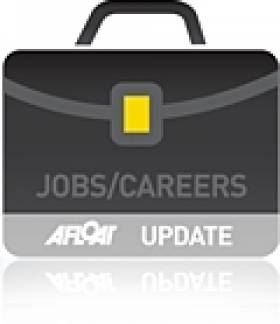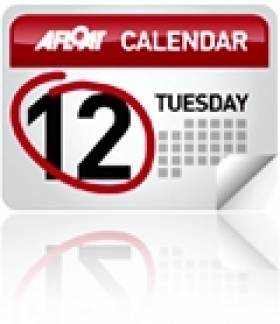Displaying items by tag: Ports and Shipping
Stealth Frigates to Visit Dublin Port
Two Dutch naval frigates, HNLMS Tromp and HNLMS Van Amstel are due to arrive into Dublin Port tomorrow for a courtesy visit over the weekend, writes Jehan Ashmore.
The Royal Netherlands Navy HNLMS Van Tromp is a De Zeven Provinciën-class air-defence and command frigate (LCF). The class has a striking streamlined visual appearance, through the use of stealth design technology. The stealth design is to minimise the vessels signature as much as possible from the detection of enemy vessels using radar.
At 6,050 tonnes, the stealth frigate is one of five built by the Royal Schelde Group, of Flushing, Netherlands. Spain and Germany also participated during the design stage of the 144-metre class which are powered by gas turbine engines capable of reaching 30 knots.
They are equipped with an Oto Breda 127 mm cannon, vertical launch system (VLS) Mk 41 for Evolved Sea Sparrow Missile (ESSM), Standard Missile and Harpoon Missiles. In addition the frigate has a Goalkeeper (rapid-fire gun), a Oerlikon 20 mm machine gun and a Mk. 46 Torpedo weapon system. The vessel also has the ability to carry a Lynx or NH-90 helicopter.
The second frigate to visit the capital is HNLMS Van Amstel, one of two multi-purpose M-class frigates. The frigate which is also known as the Karel Doorman class can be used for surface warfare and anti-submarine warfare. They also have their own air-defence capabilities.
The 122-metre vessels displace 3,300 tonnes and have a two Rolls Royce (Spey 1A) gas turbines delivering 29 knots. The class are equipped with an array of defence / attack armament to includes an Oto Melara 76 mm gun for surface and air targets, a Harpoon weapon system and a NATO Sea Sparrow Vertical Launch weapon system for use against air targets at close range. Like the De Zeven –class the M-class frigate is also capable of carrying a Lynx helicopter.
Dun Laoghaire ‘Cruise’ Harbour Project Out To Tender
-Dun Laoghaire Rathdown County Council
-Dun Laoghaire Harbour Company
-Dun Laoghaire Chamber of Commerce
-Dun Laoghaire Business Association
and Dun Laoghaire Tourism interests.
Royal Navy Anti-Piracy Frigate Visits Dublin Port
The Royal Navy's Type 22 frigate HMS Chatham (F87) which recently returned to UK waters after a seven month deployment on anti-piracy duties off Somalia, visited Dublin Port last weekend, writes Jehan Ashmore.
HMS Chatham was the lead vessel for NATO's 'Operation Ocean Shield' as part of a multi-national task force in the seas off the African state that in recent years has become notorious for piracy.

HMS Chatham departs Dublin Bay and the rocks off Dalkey Island. Photo: Jehan Ashmore /ShipSNAPS
The frigate departed Dublin on Monday afternoon and set an easterly course off the Baily Lighthouse, but surprisingly the 5,300 tonnes vessel returned into the bay. HMS Chatham then crossed the bay towards Sandycove. From there the 148m vessel which has a draft of 6.7m veered in a south-easterly direction, to sweep past off the rocky outcrop, to the north of Dalkey Island and continued southbound off The Muglins.
In mid-November the frigate visited her namesake port on the Medway to mark the 20th anniversary since the vessel's commissioning at Chatham in 1990. The occasion was also the first time that such an event had taken place outside a Royal Navy establishment.
Built in 1988, the vessel was launched from the Swan Hunter shipyard on the Tyne and is normally based in her homeport of Devonport, Plymouth.
Opportunities in International Maritime Internships
A list of internships for the international maritime industry for 2011 has been announced and can be viewed on the Maritime Careers section posted on the Irish Maritime Development Office (IMDO).
The following companies: ABS, BP, Shell, Clarksons, Lloyds Register and the European Maritime Safety Association (EMSA) are offering a broad range of internship positions.
For further details on the internships and links to the companies, logon here
Shannon Foynes Port Company to Host Ports Conference
The Irish Ports Association will hold the annual conference for the industry on Friday, 24 September. The venue is Thomond Park Conference Centre, Limerick and the theme is 'Ports Policy for an export led recovery'.
For further details and enquiries contact Evelyn or Carmel at Shannon Foynes Port Company at Tel: 00 353 (0)69 731 00, Fax: 353 (0)69 731 38 or Email: [email protected]
In addition a PDF for the conference can be downloaded from the port company website www.sfpc.ie































































